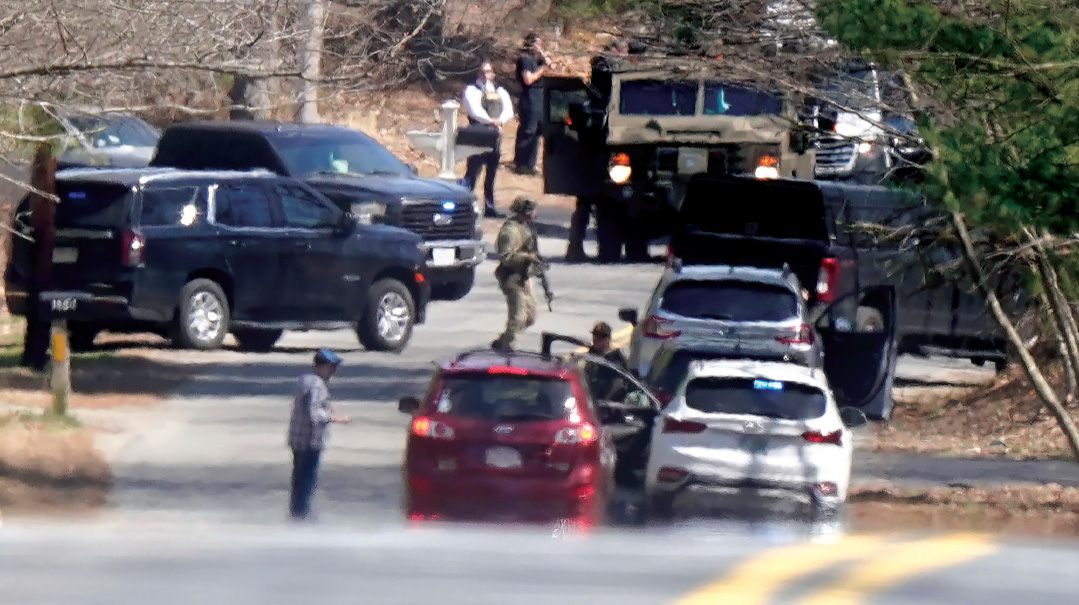Ukraine’s Pain and America’s Gain

The US and Europe have poured tens of billions into military aid for Ukraine, but how long can this pipeline continue?

Photos: AP Images
N
ine months into the Ukraine war, the end is nowhere in sight. The Ukrainians have made progress in recent weeks, retaking a number of key cities, but this is still a war of attrition. And as the conflict drags with no clear outcome on the horizon, the question looms as to whether Russian president Vladimir Putin will lash out like a cornered predator.
Putin’s invasion in February put the West in an awkward position. The Europeans had clung to the hope until the last minute that Putin would come to his senses and when it happened, they weren’t ready with an effective response. Europe’s dependence on Russian gas only complicated things further.
In the weeks after the invasion was launched, though, the West rallied, supplying Ukraine with weapons, equipment, and intelligence.
The Ukrainians, for their part, shocked the world by exposing the weakness and disarray of the Russian army. Vladimir Zelensky, Ukraine’s relatively young and experienced leader, flatly rejected a US offer of evacuation from Kiev, repelled the Russians from the gates of his capital, and launched a global diplomatic offensive to secure the advanced weapons systems his troops needed to fend off the Russian advance.
Still, the Russians are no fools, and they still have a series of “doomsday” weapons left in their arsenal. The obvious option is tactical nuclear weapons, though American officials believe that this is not on the agenda. But that doesn’t mean Putin doesn’t have other ways to make life difficult for Ukraine and its European allies. The “mysterious” sabotaging of the Nord Stream pipeline was a taste of this. At the same time, Russia has started targeting Ukraine’s civilian infrastructure, including power plants. And while the two countries reached a deal last summer to continue wheat exports, there’s no guarantee Russia will honor the agreement.
And so, with the Ukrainians slowly rolling back Russia’s gains in the east, but with the Russians yet to have their final word, many in the West are starting to think long-term. The US and Europe have poured tens of billions into military aid for Ukraine, but how long can this pipeline continue?
“It is not a blank check,” says John Hardie, deputy director of the Russia program at the Foundation for Defense of Democracies (FDD). “I think that in the case of Ukraine, the continuing investment is a good use of the funds, not only for moral reasons, but it also makes a lot of strategic sense.”
The strategic benefits for the United States really outweigh the costs, Hardie argues, “because we’re helping Ukraine sort of knock down one of our biggest adversaries, and at the same time we’re investing in future deterrence against other adversaries, particularly China.
“A Chinese invasion of Taiwan would have even greater disastrous consequences for the United States, and definitely for the global economy, if you consider Taiwan’s role in semiconductor microelectronic production. So I think by showing resolve in Ukraine, we’re improving our chances of deterring those other adversaries and saving ourselves future costs.”
Hardie is unconcerned at the prospect of this war turning into a never-ending quagmire.
“While the Ukrainian battlefield gains in terms of retaking territory will [probably] slow over the winter, I wouldn’t mistake this temporary lull for a long-term stalemate,” he says. “I think Ukraine can continue to retake territory if it gets sufficient Western support. I’m looking toward the 2023 timeline for Ukraine to launch another major counter-offensive, so I wouldn’t count out future significant territorial gains.”
But if Hardie’s assessment is right, Putin will likely be backed into a corner, making his behavior even more unpredictable. That’s what analysts in Washington are trying to understand.
“That’s the million-dollar question,” Hardie says. “You can never rule out some sort of escalation. The probability of his using nuclear weapons remains fairly low, although it’s higher than it probably has been since the 1980s. That said, I was heartened by the fact that we’ve had two major counter-offensives in the last few months with Ukraine retaking territory that Russia claimed as its own, and in neither case did Russia indicate it was going to use nuclear weapons.”
Even with tactical nukes ostensibly off the table, though, Hardi remains concerned about Putin resorting to other measures, such as torpedoing the grain export agreement.
“When it comes to the grain agreement, [Putin] is clearly under pressure from Turkey and the other countries that depend on grain coming from Ukraine,” he says. “Russia’s proven so far that it seems to value whatever gains it gets from those continuing partnerships more than whatever damage it could cause to Ukraine by cutting off trade supply. So at least for now, it looks like the Russians will continue with shipments.”
Hardie gives the Biden administration high grades — although not perfect — for how it has handled the crisis.
“I would give them a B overall,” he says. “In November and December, the Biden administration dragged its feet [on weapons shipments to Ukraine.] But I really commend the administration and other Western allies on the speed and agility with which we moved material into Ukraine once the invasion began. Western aid was really critical in helping Ukraine sustain the war.” —
(Originally featured in Mishpacha, Issue 938)
Oops! We could not locate your form.







